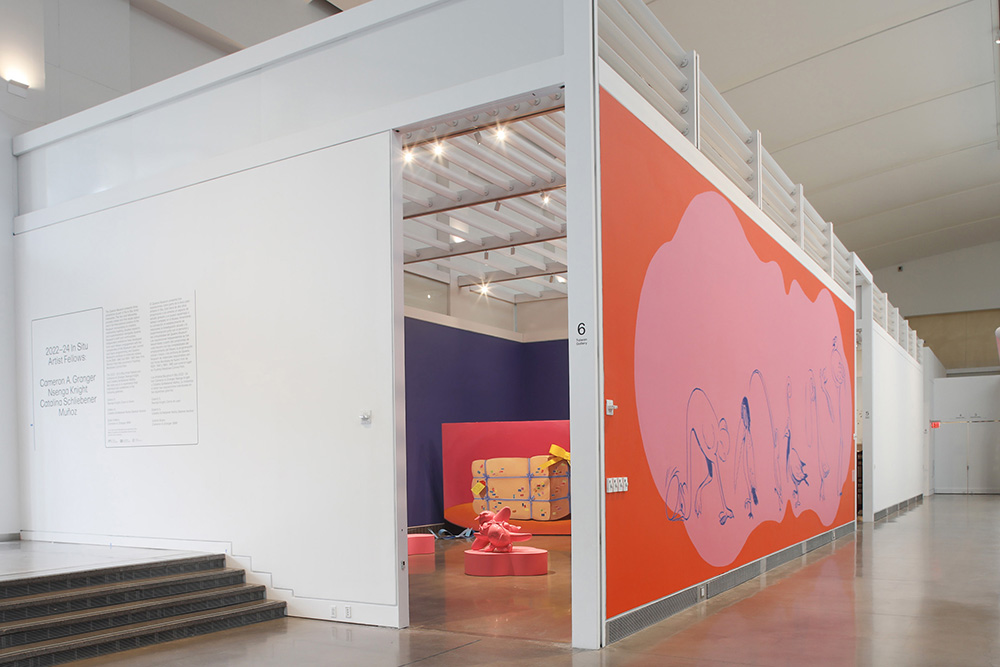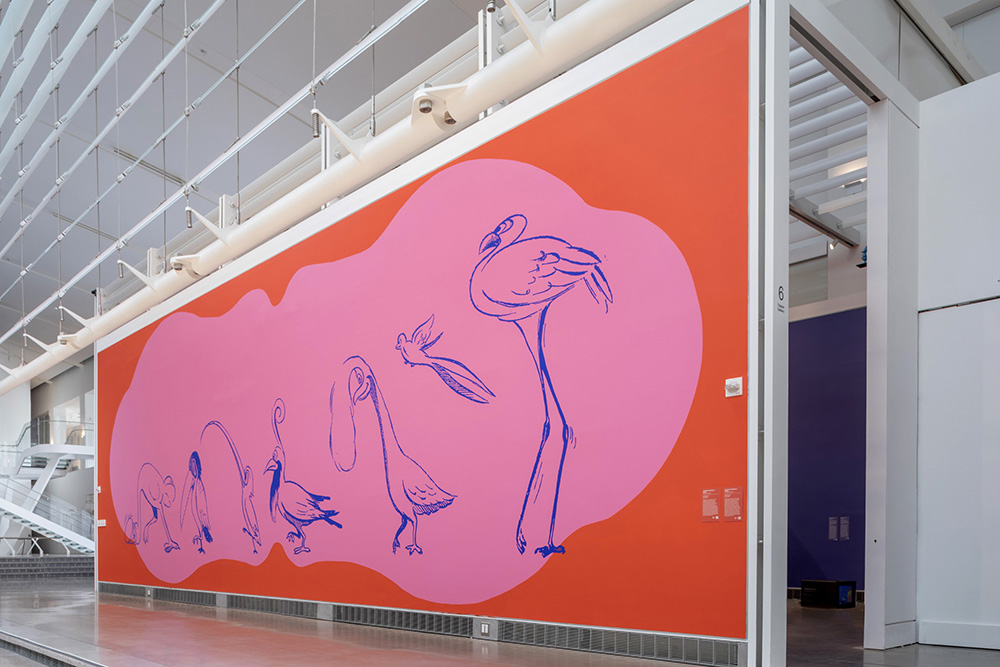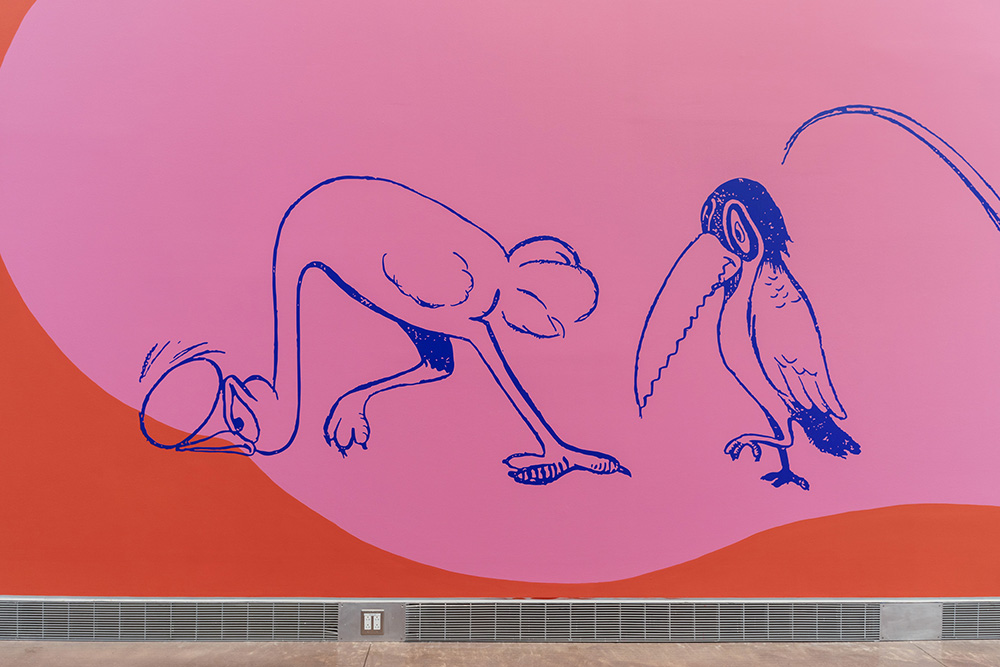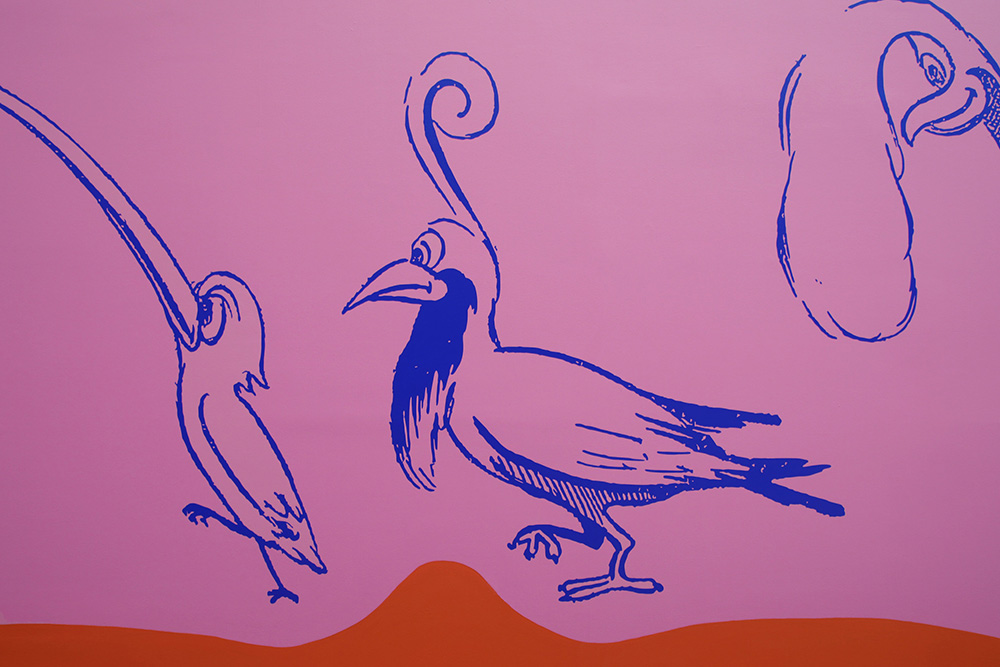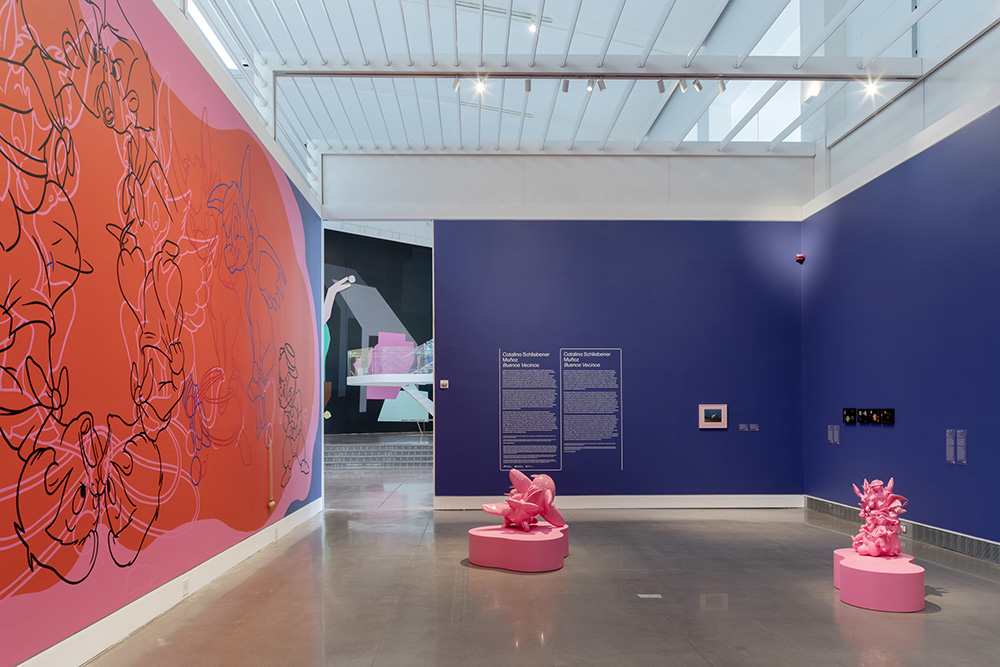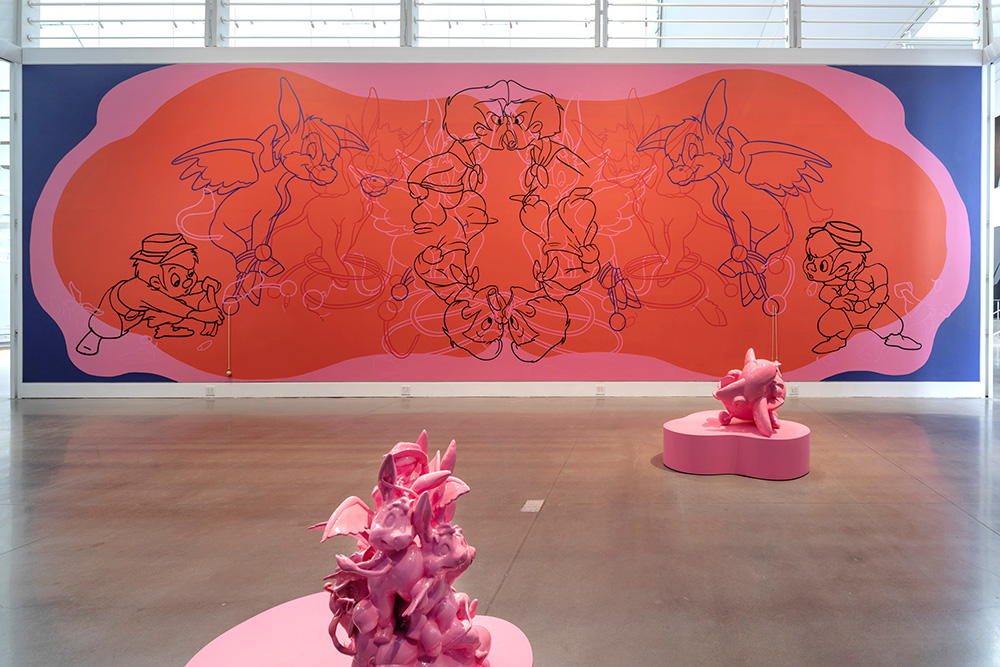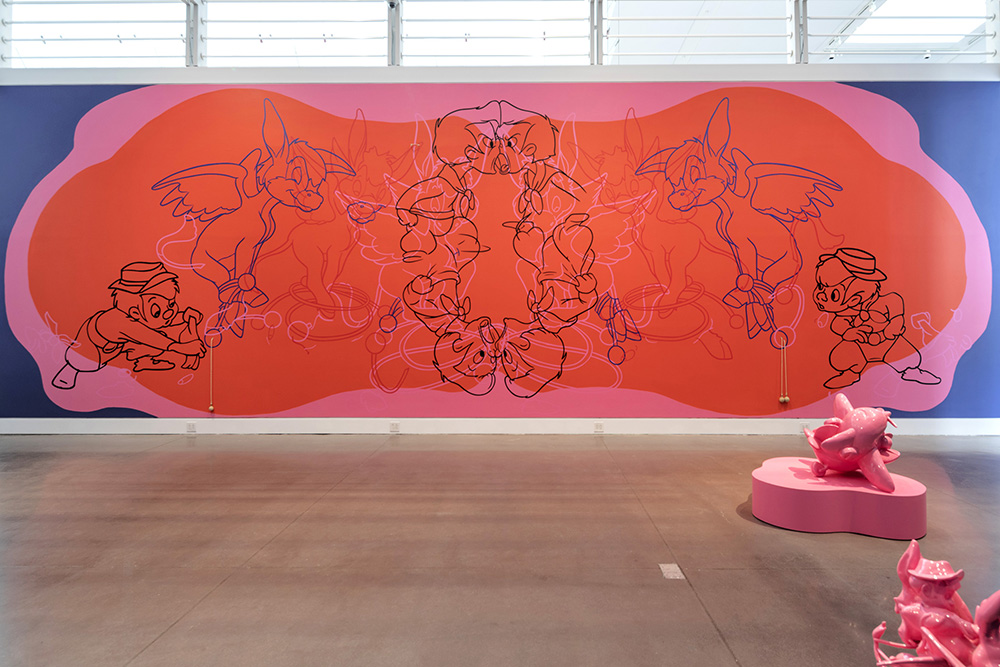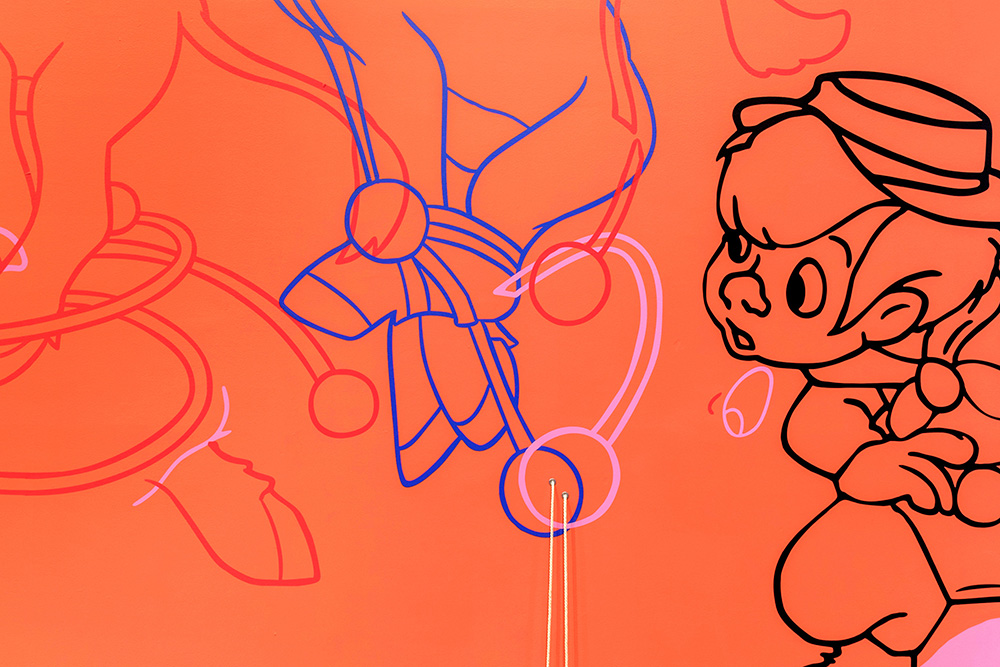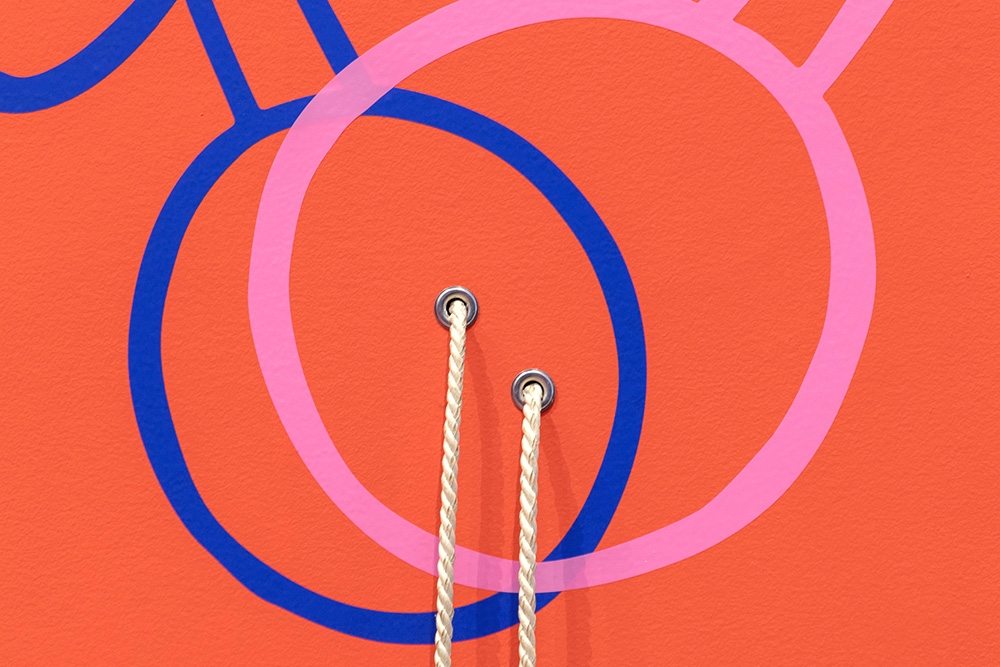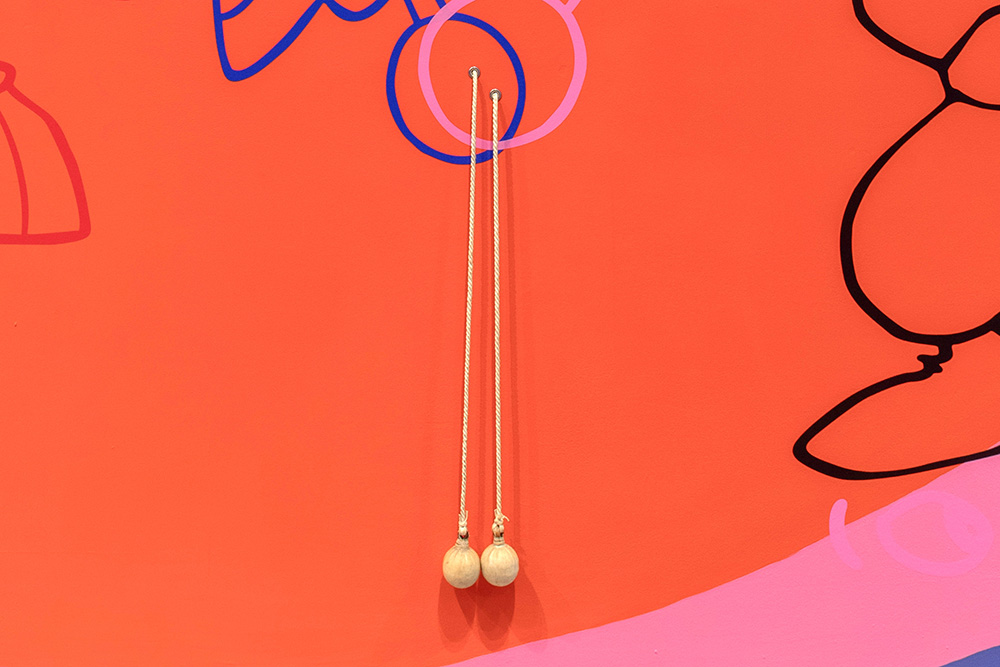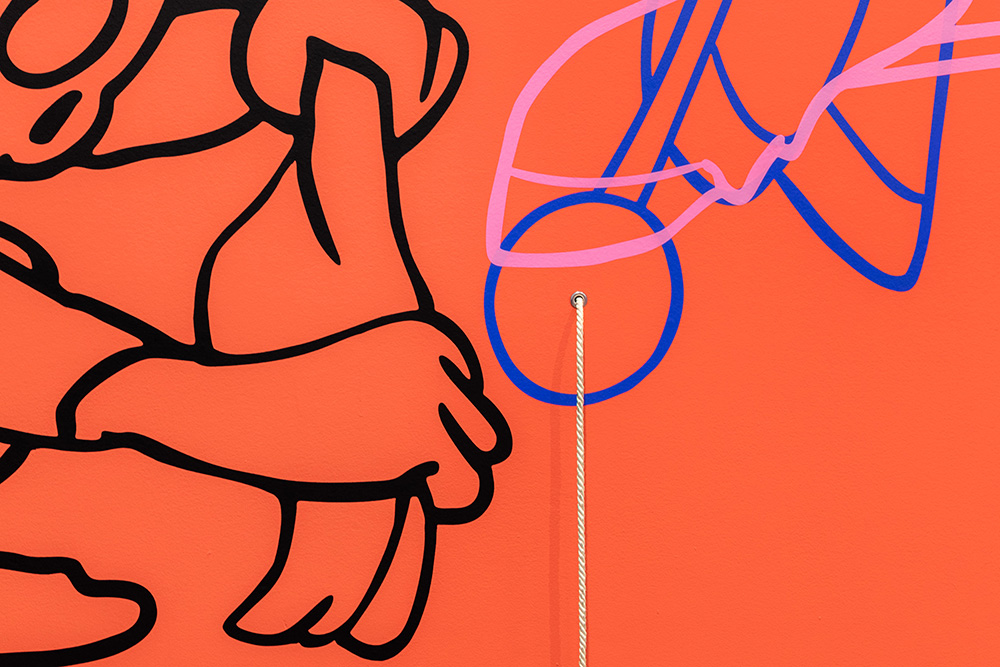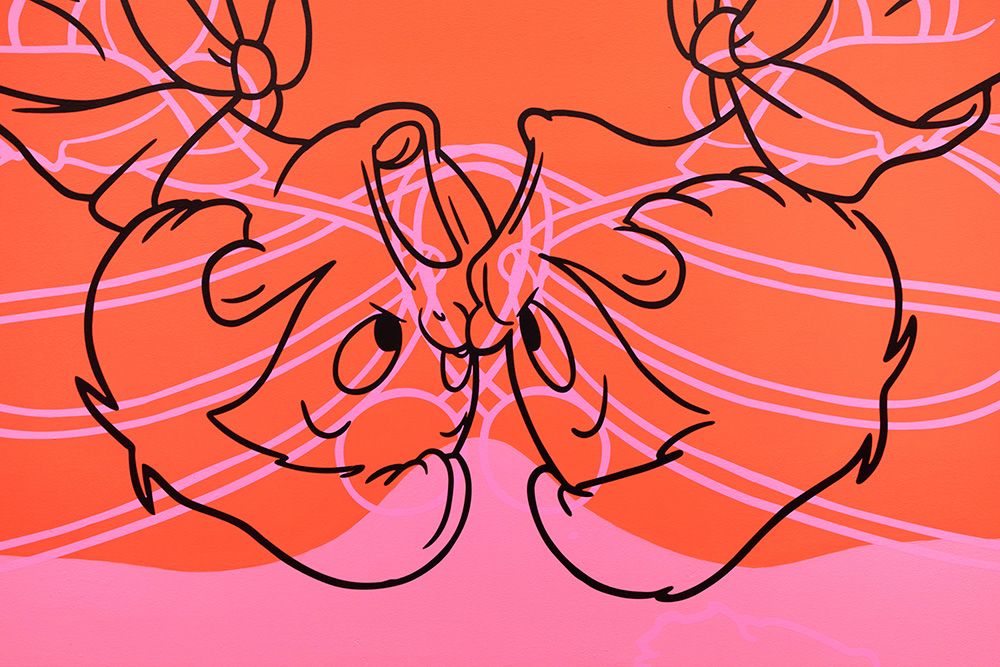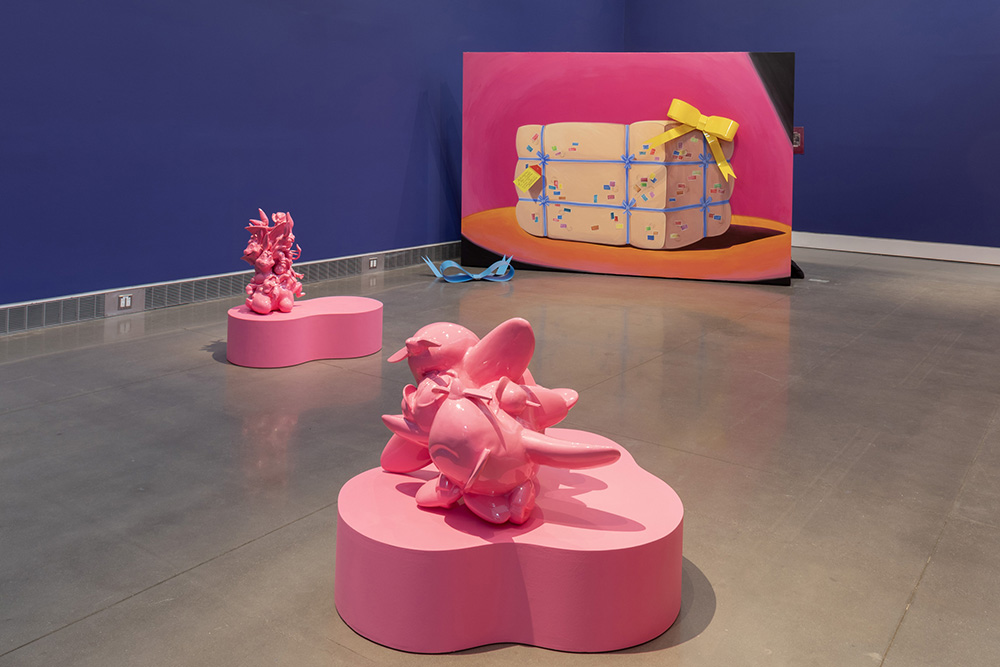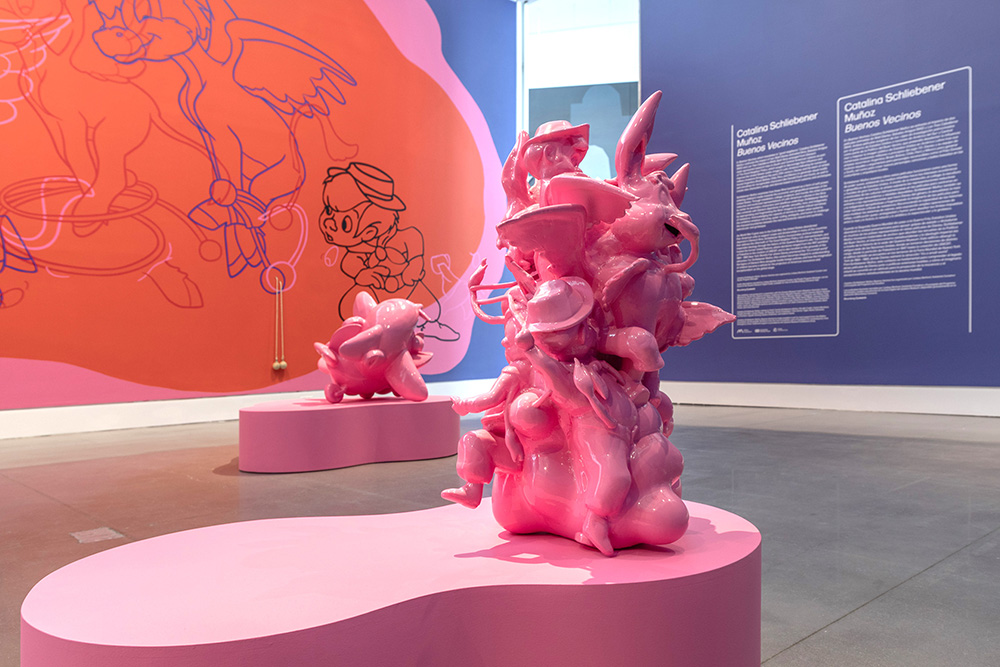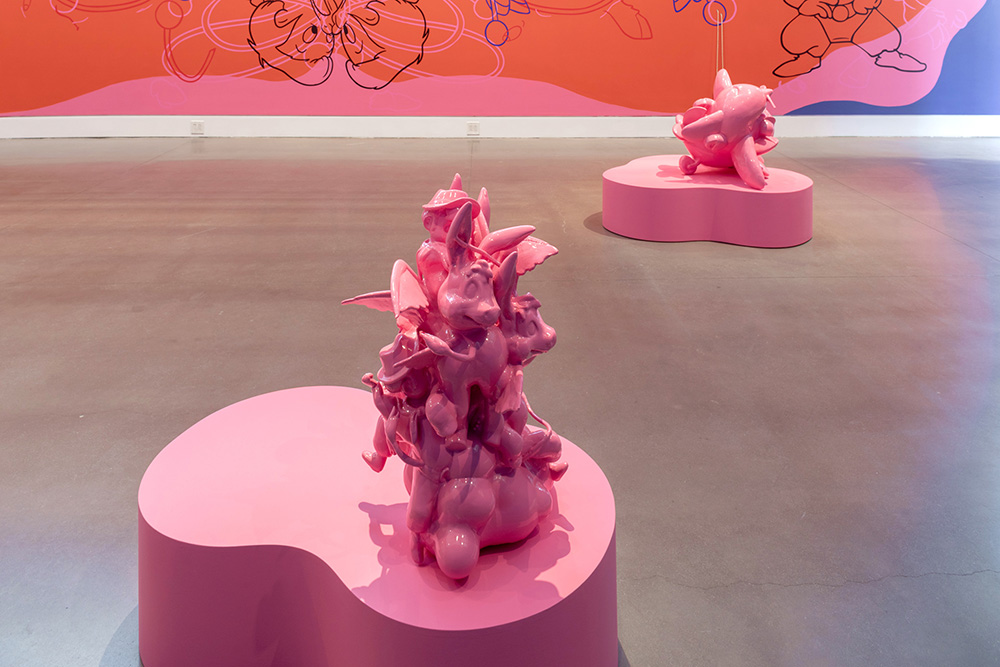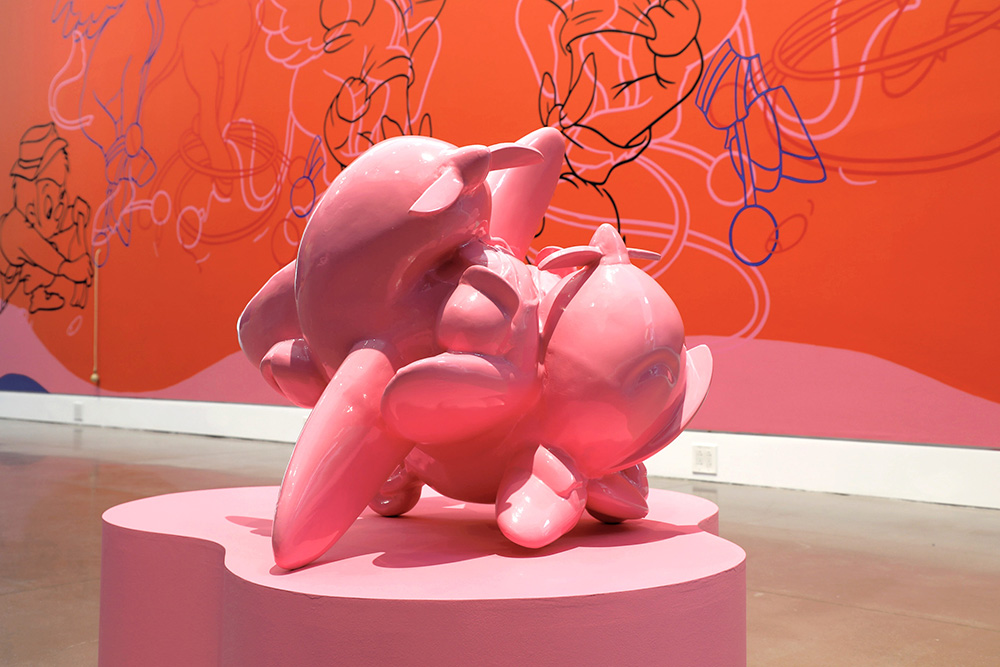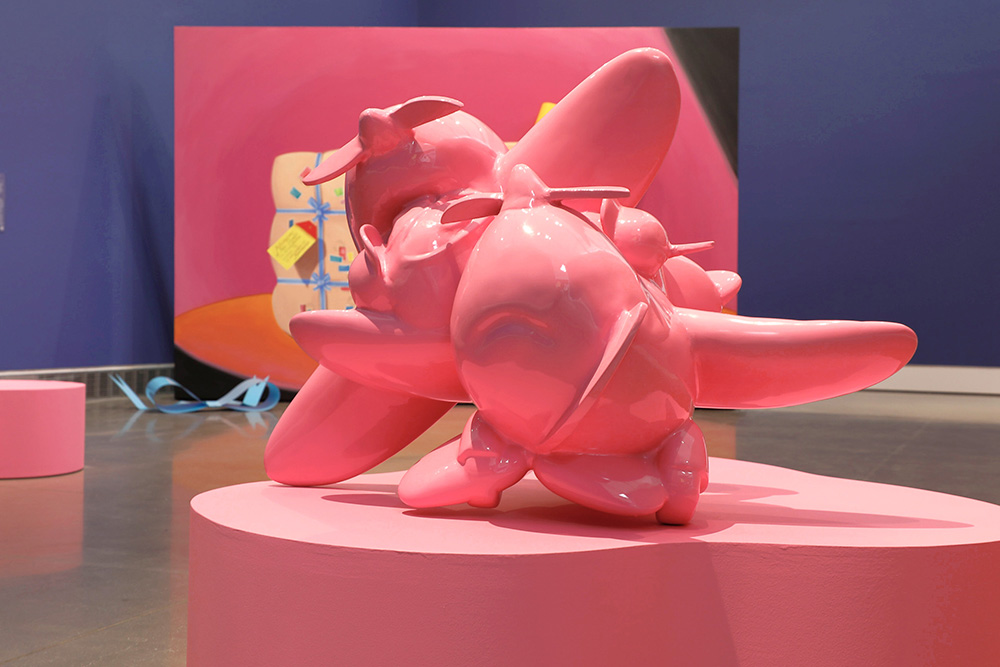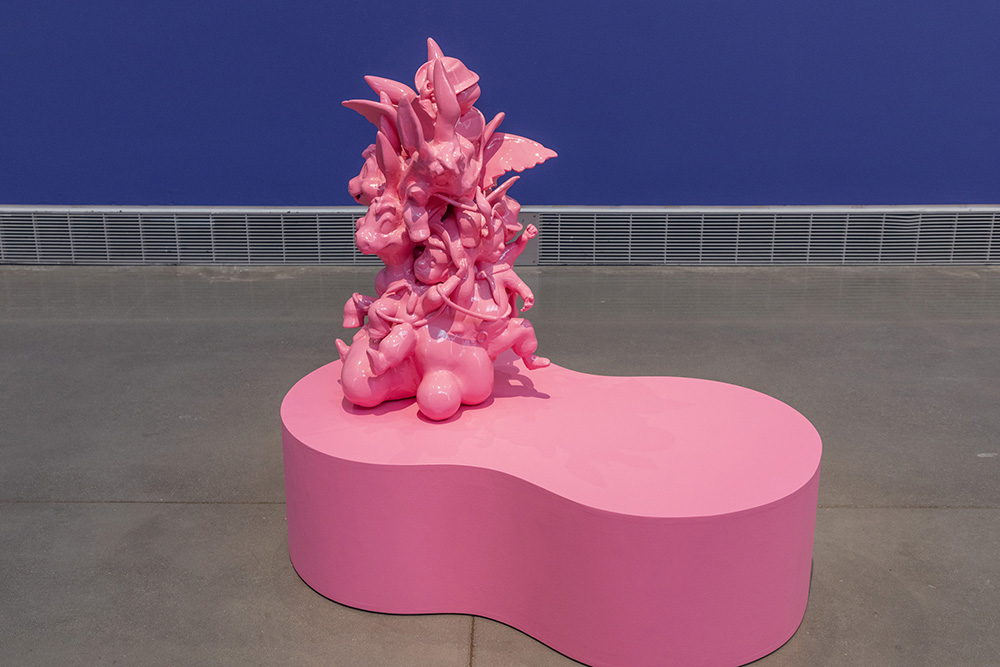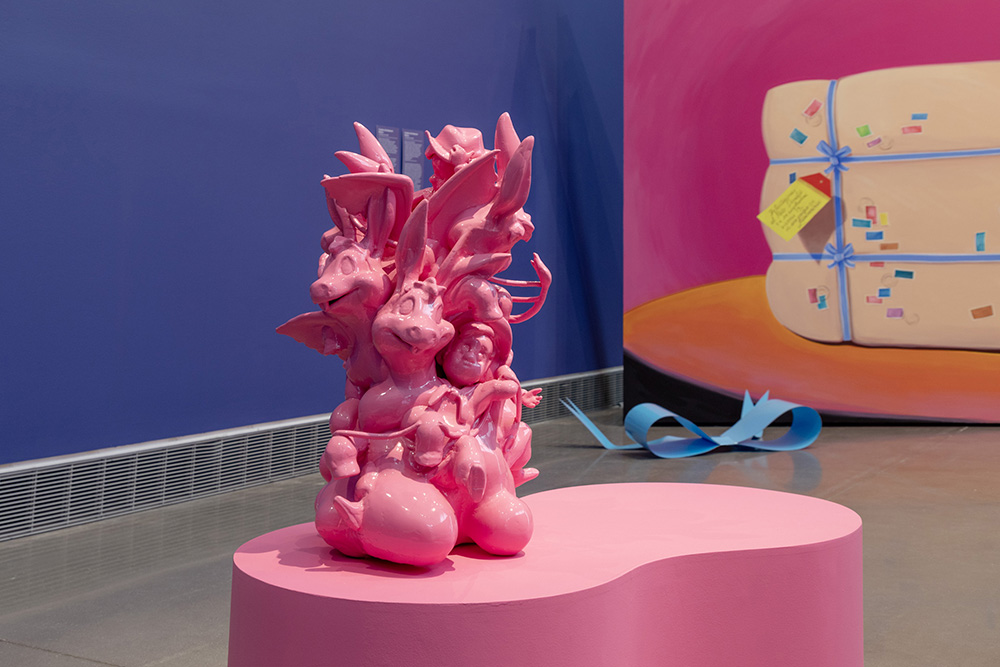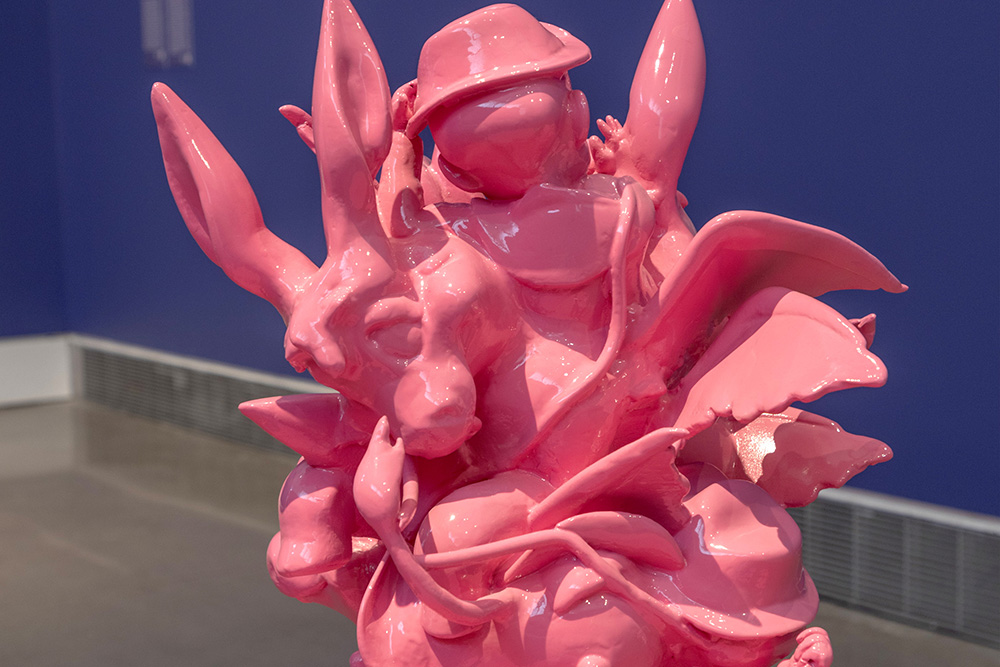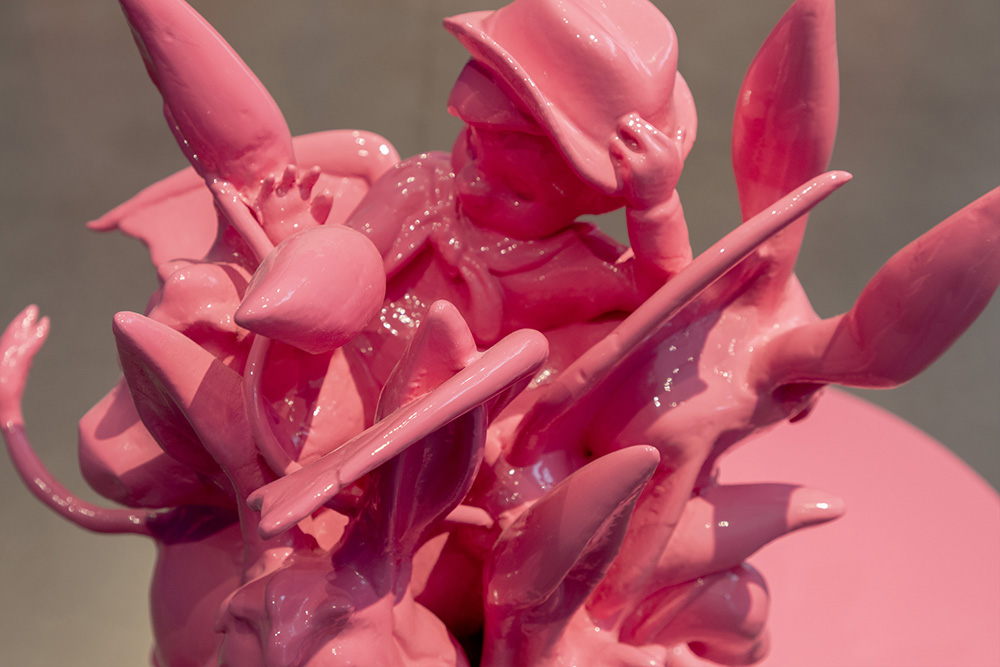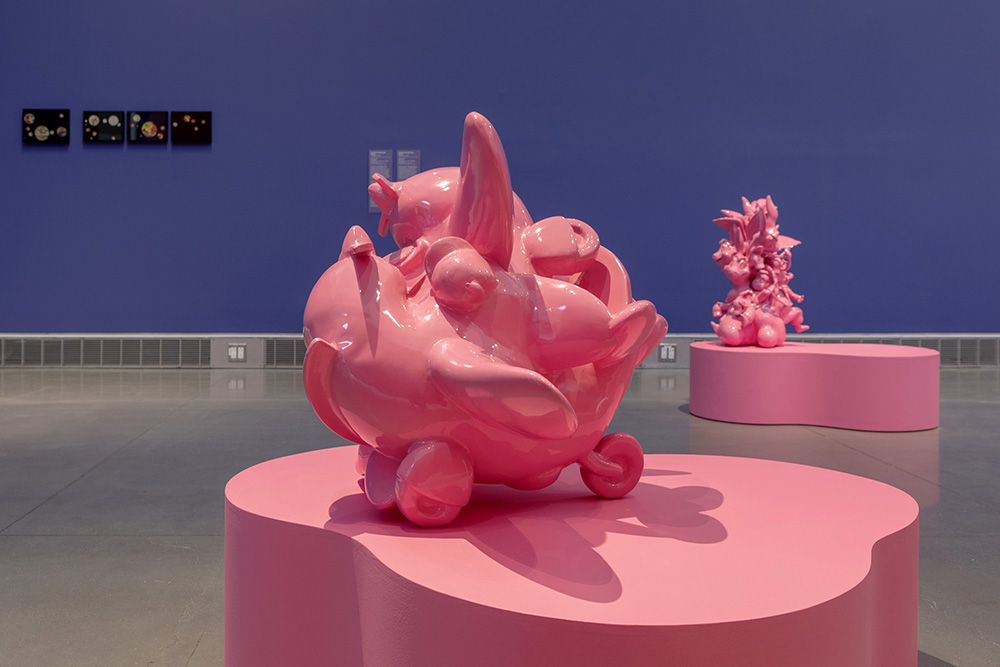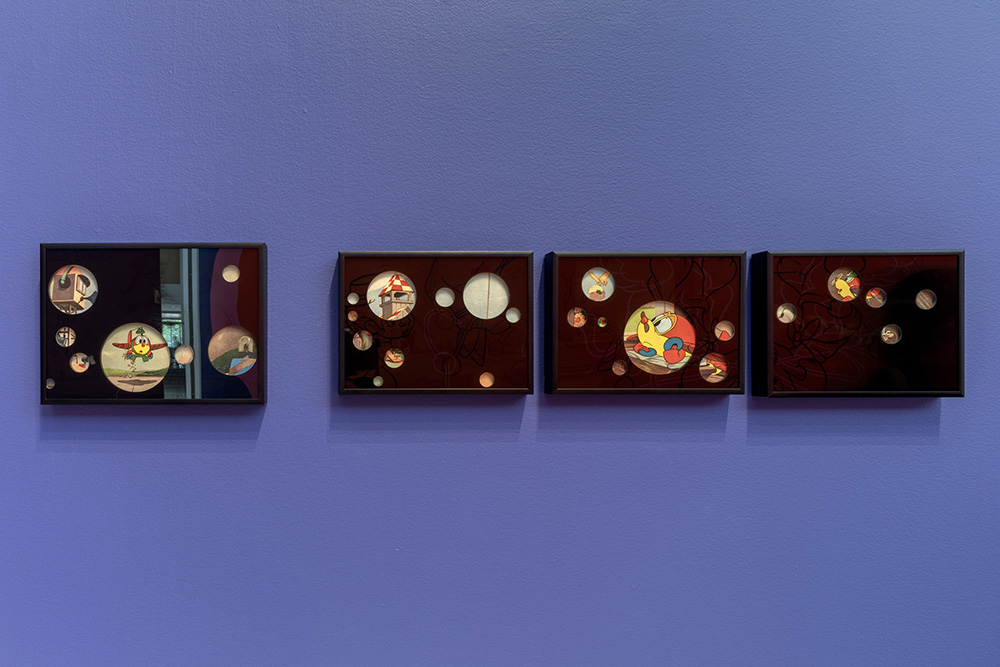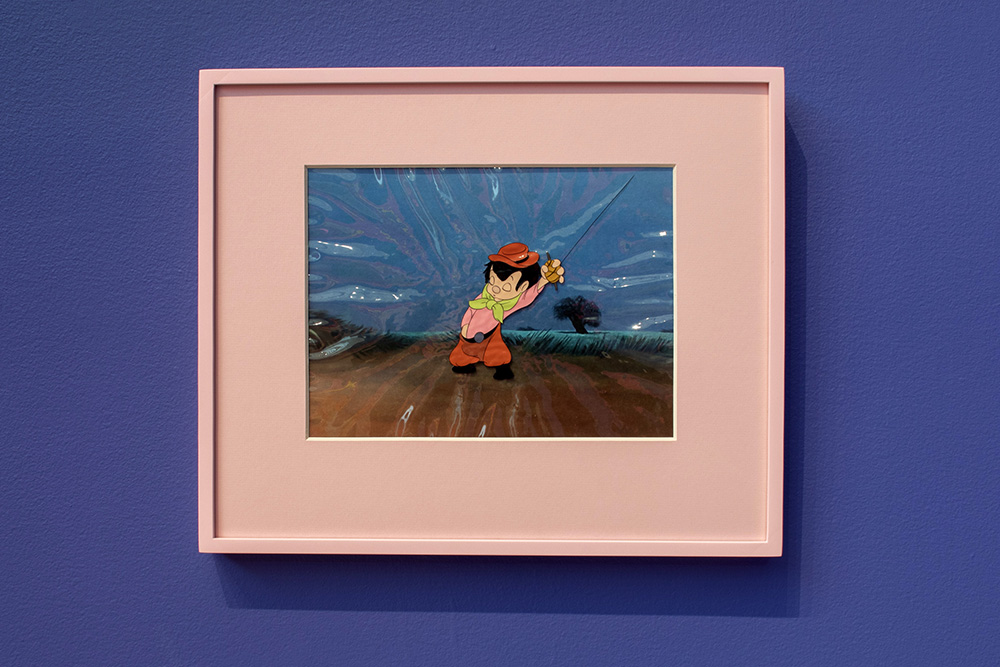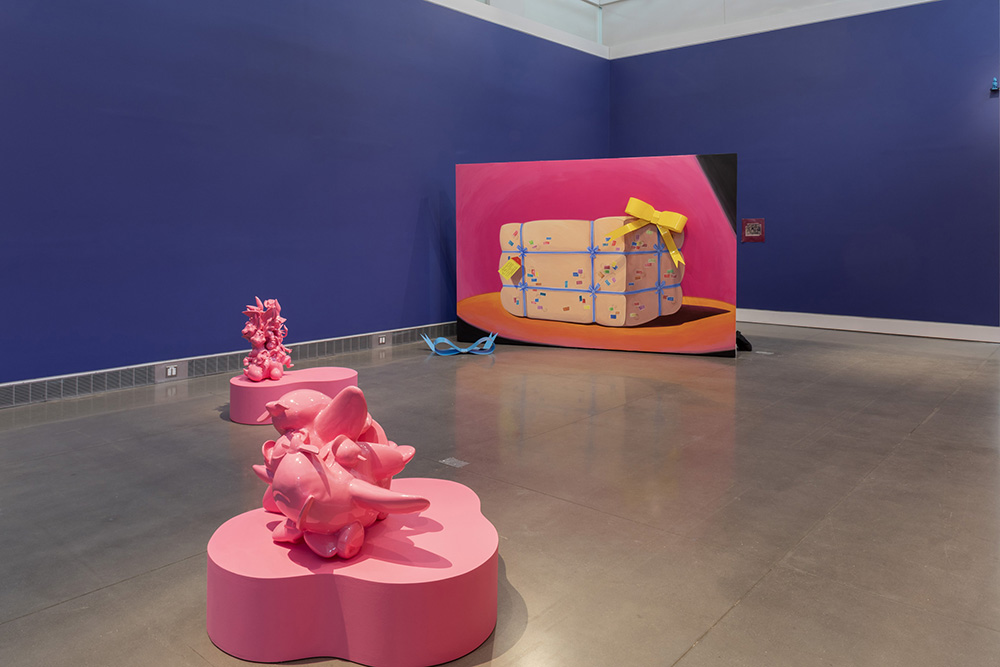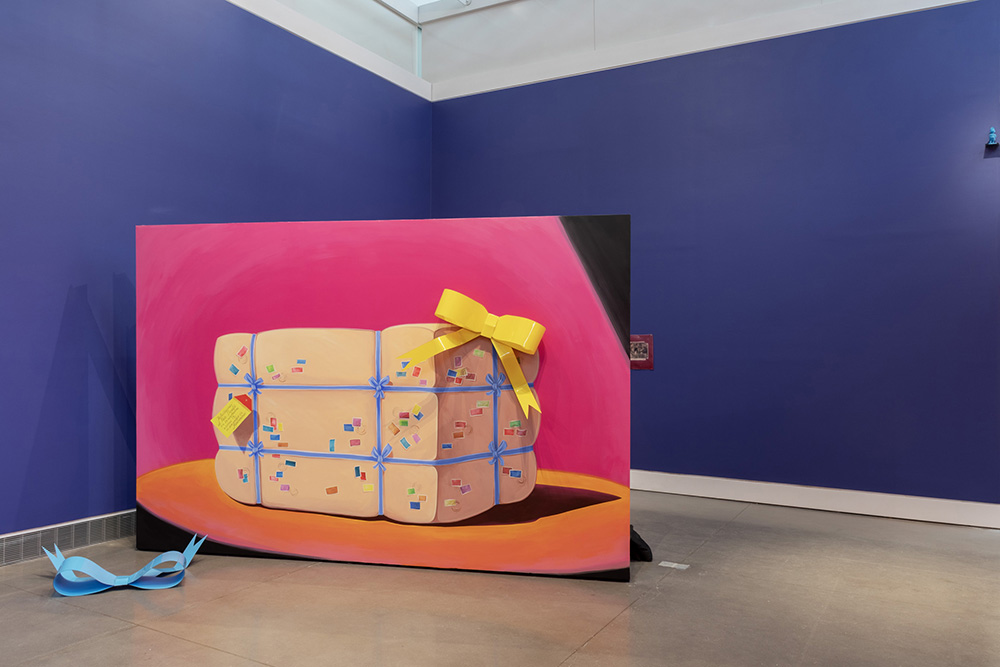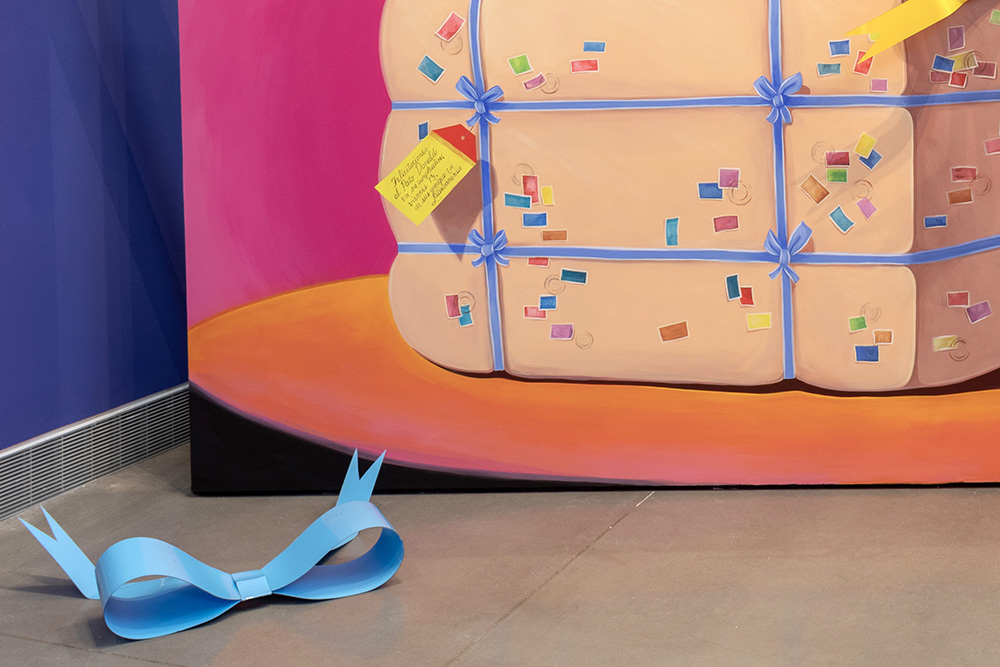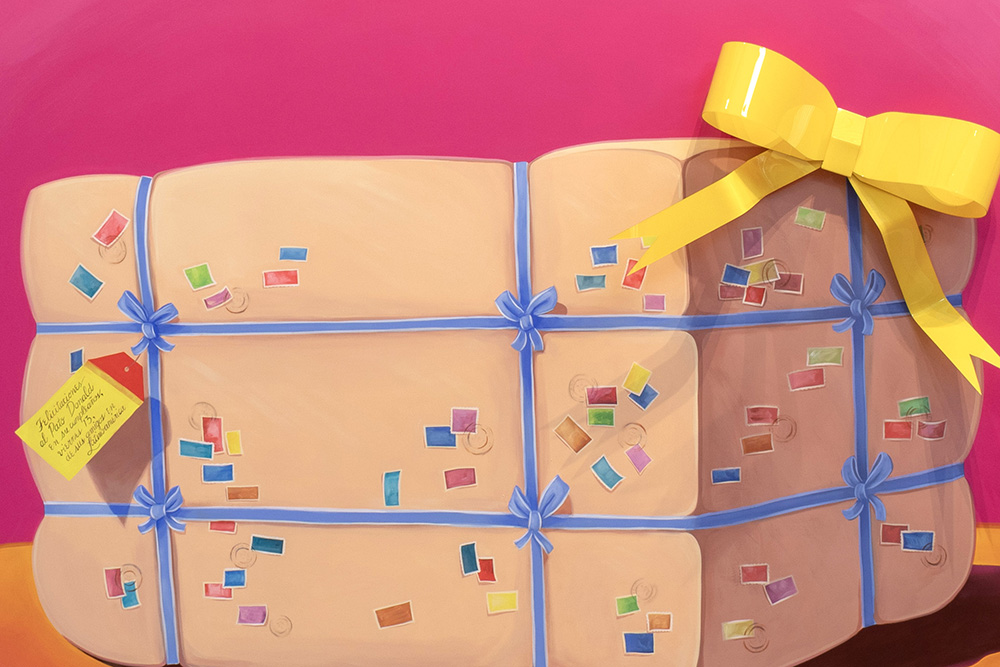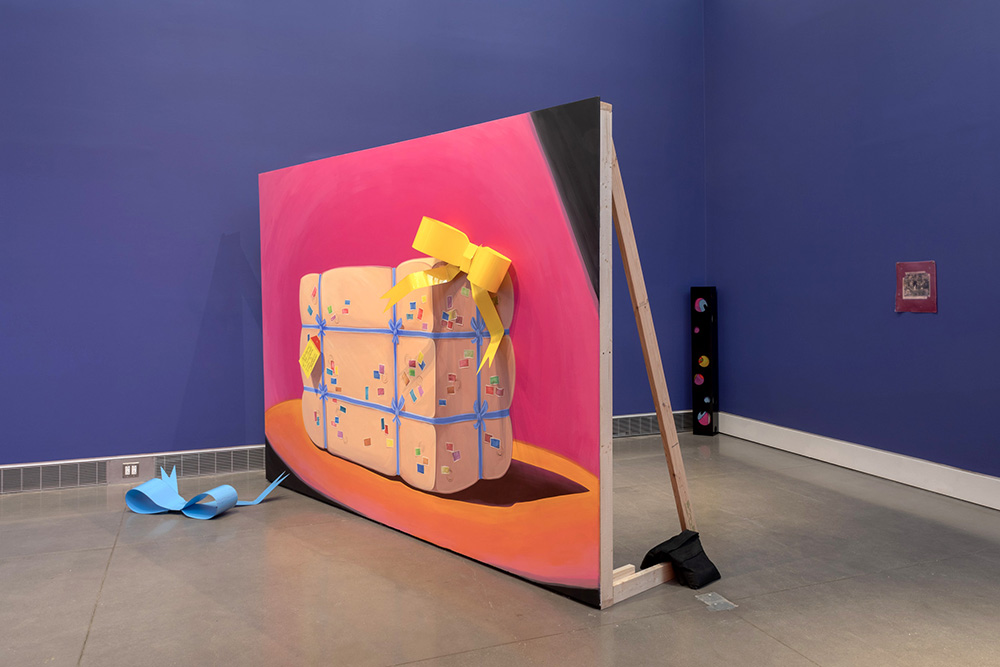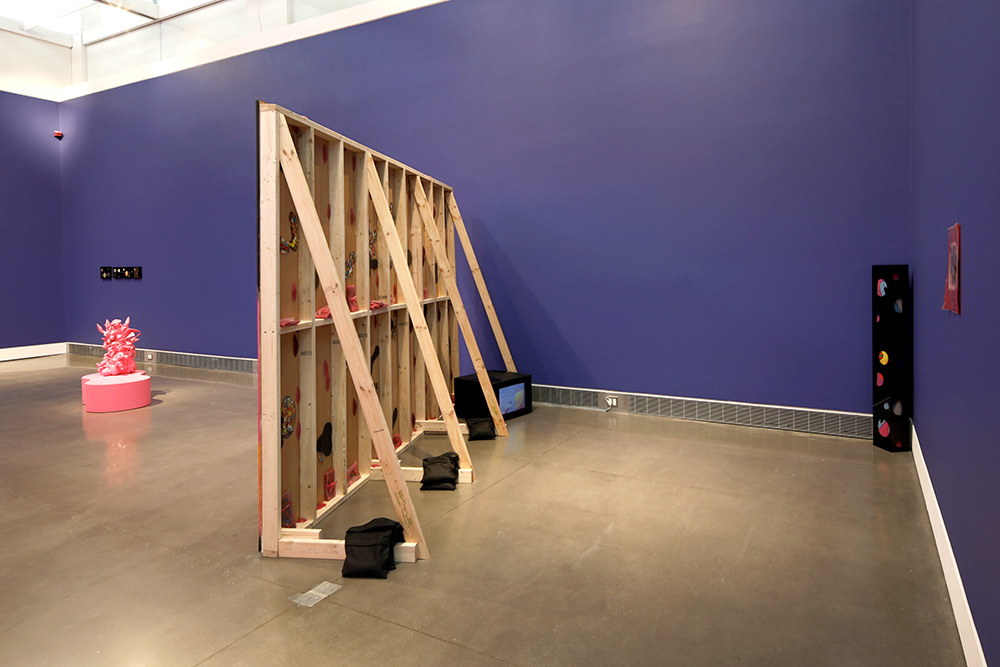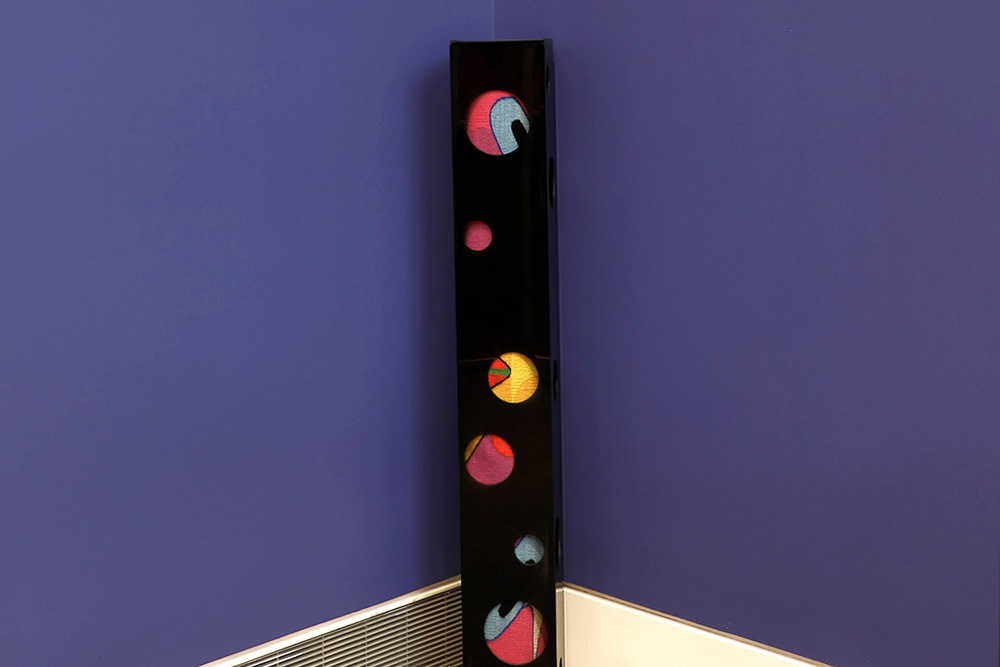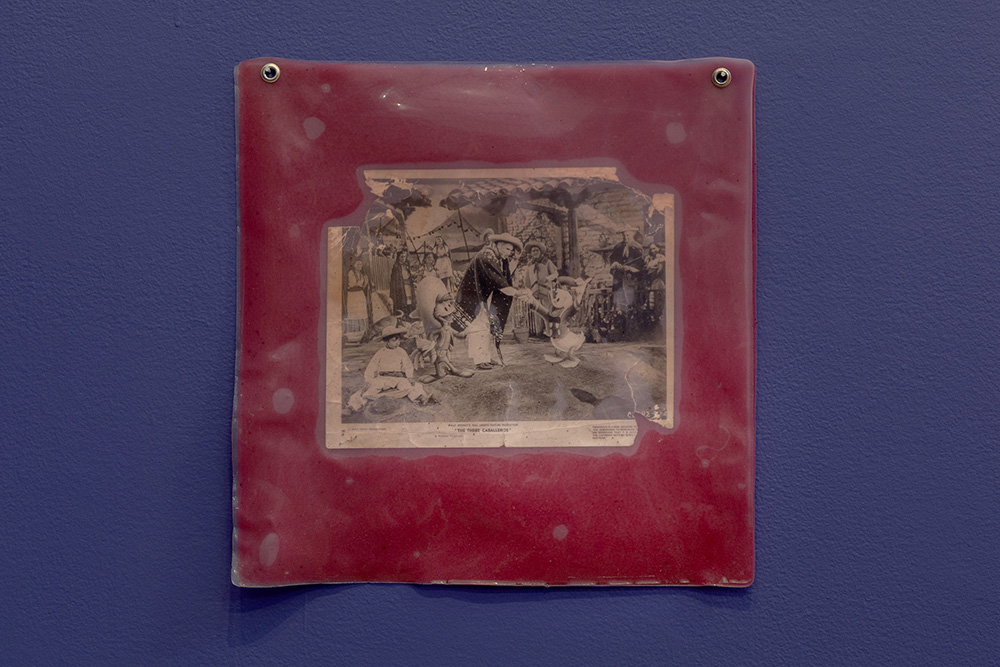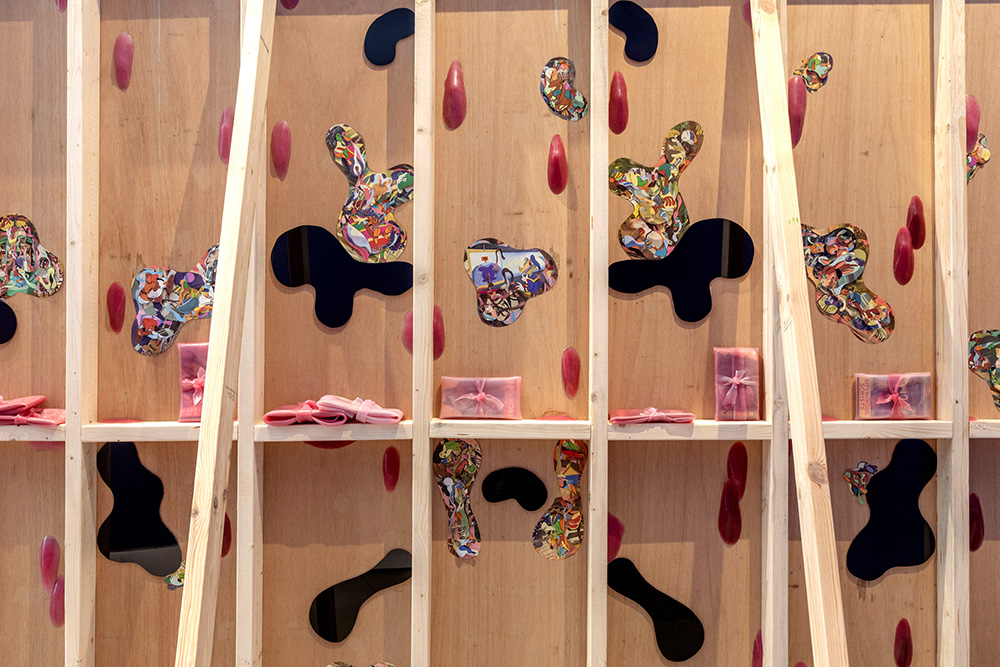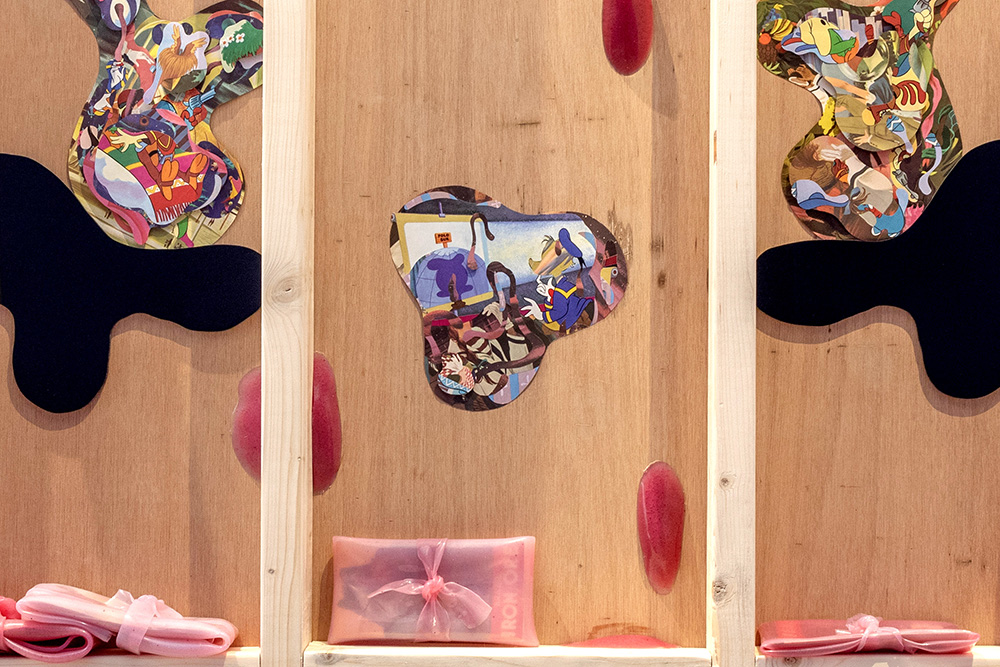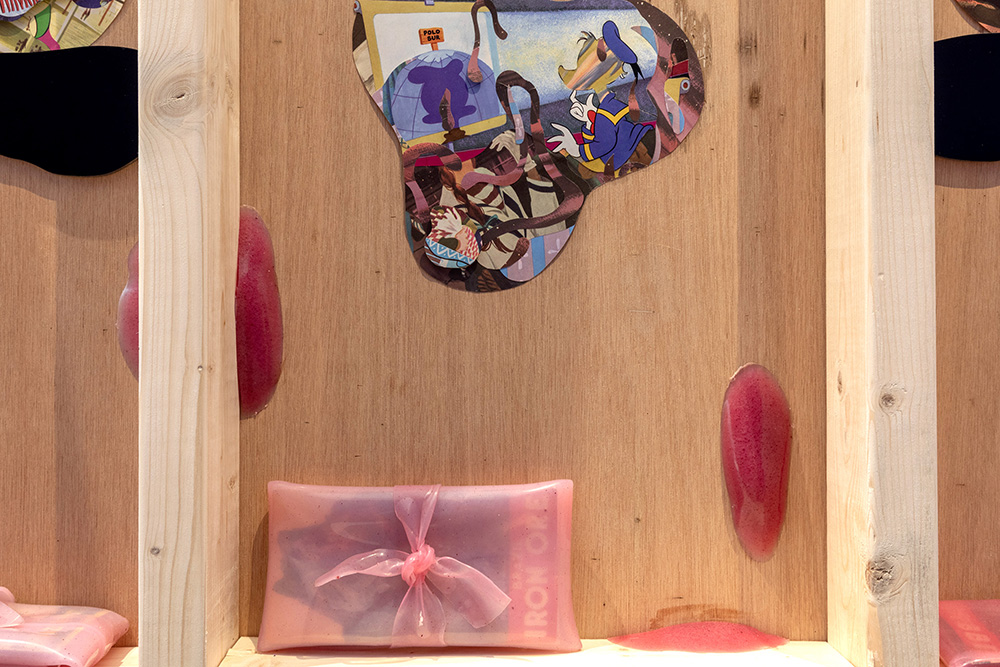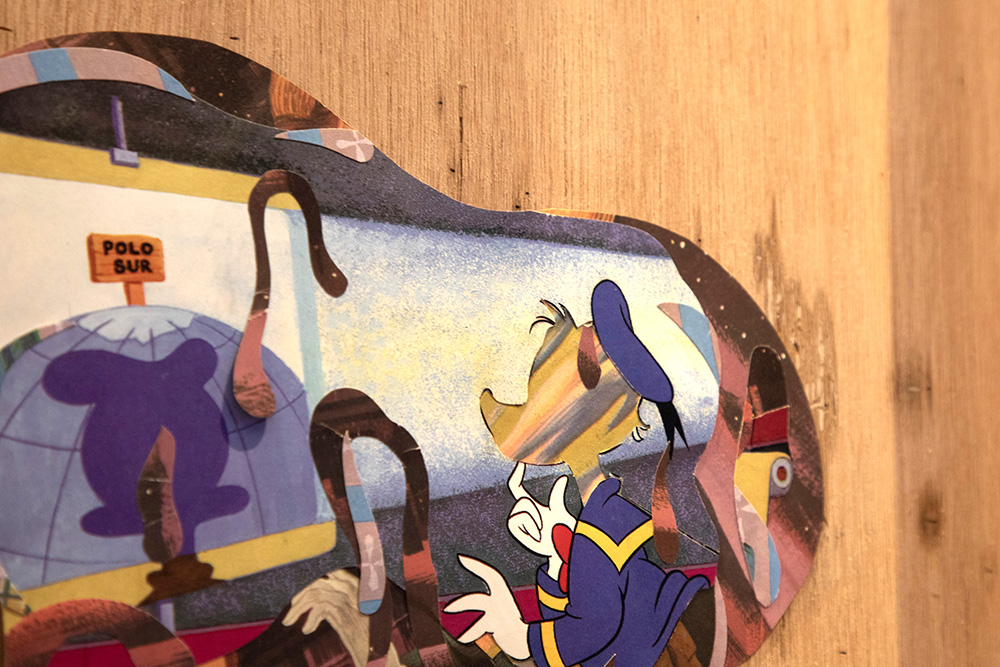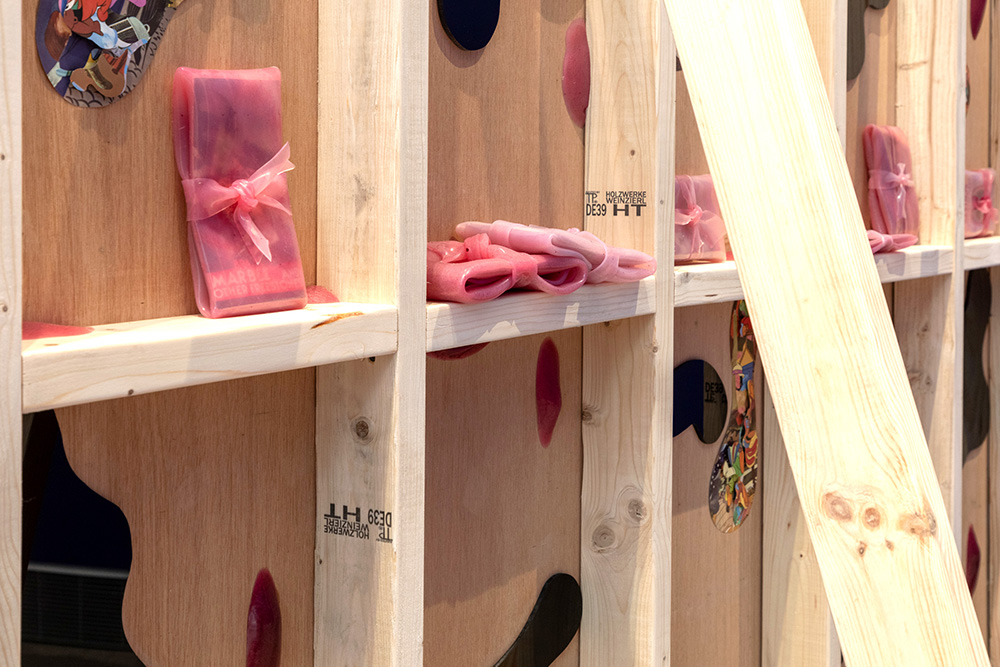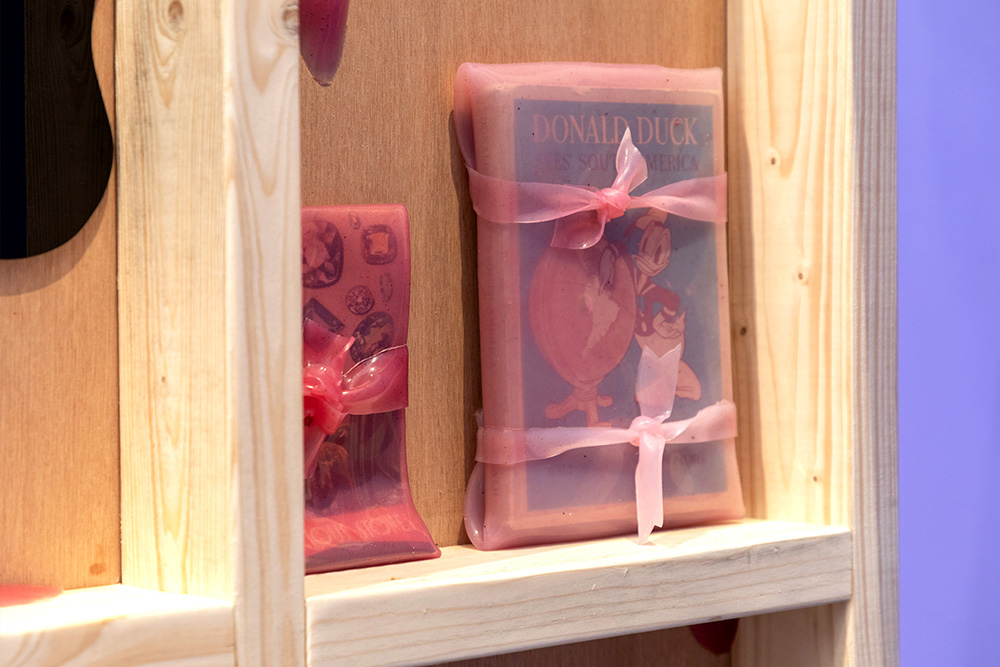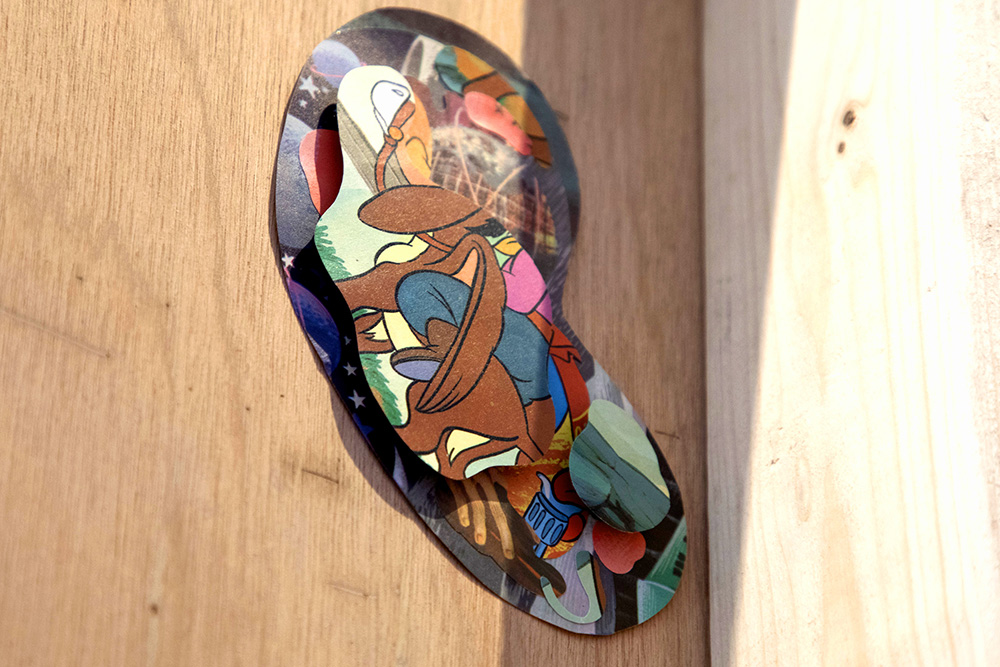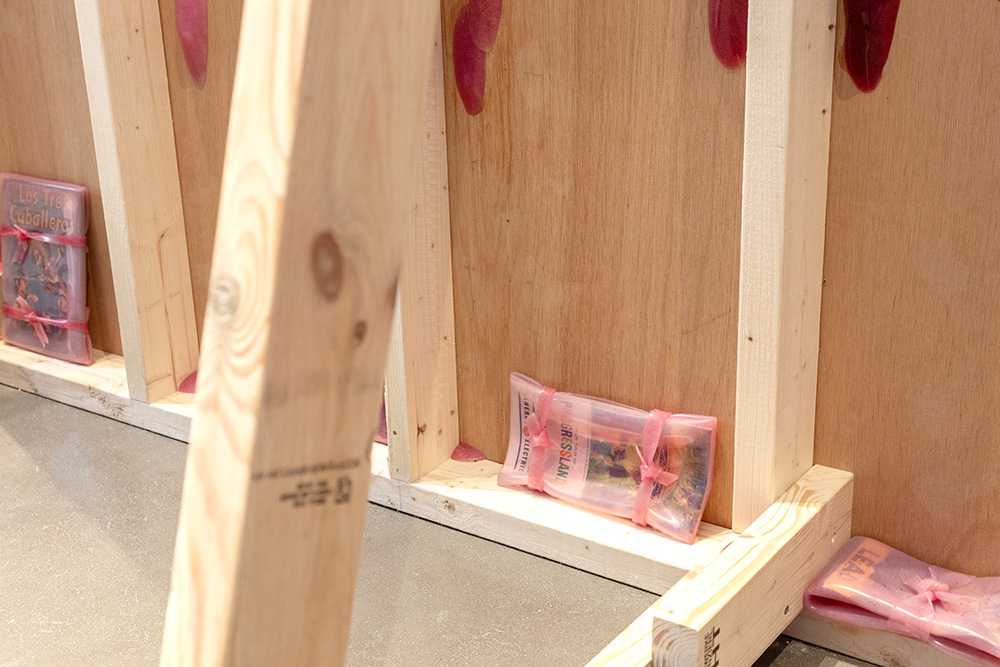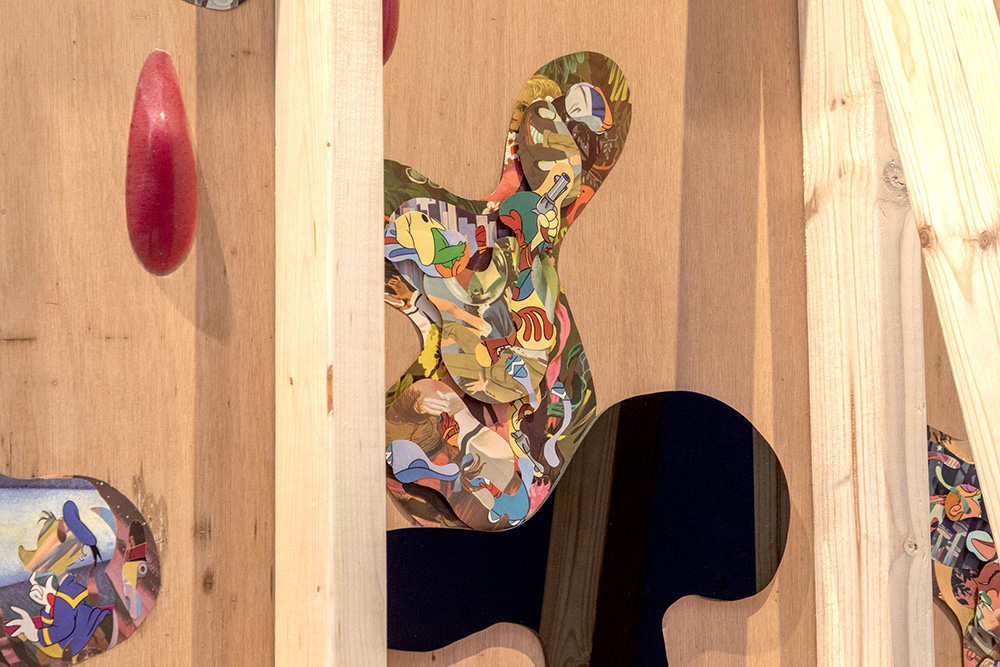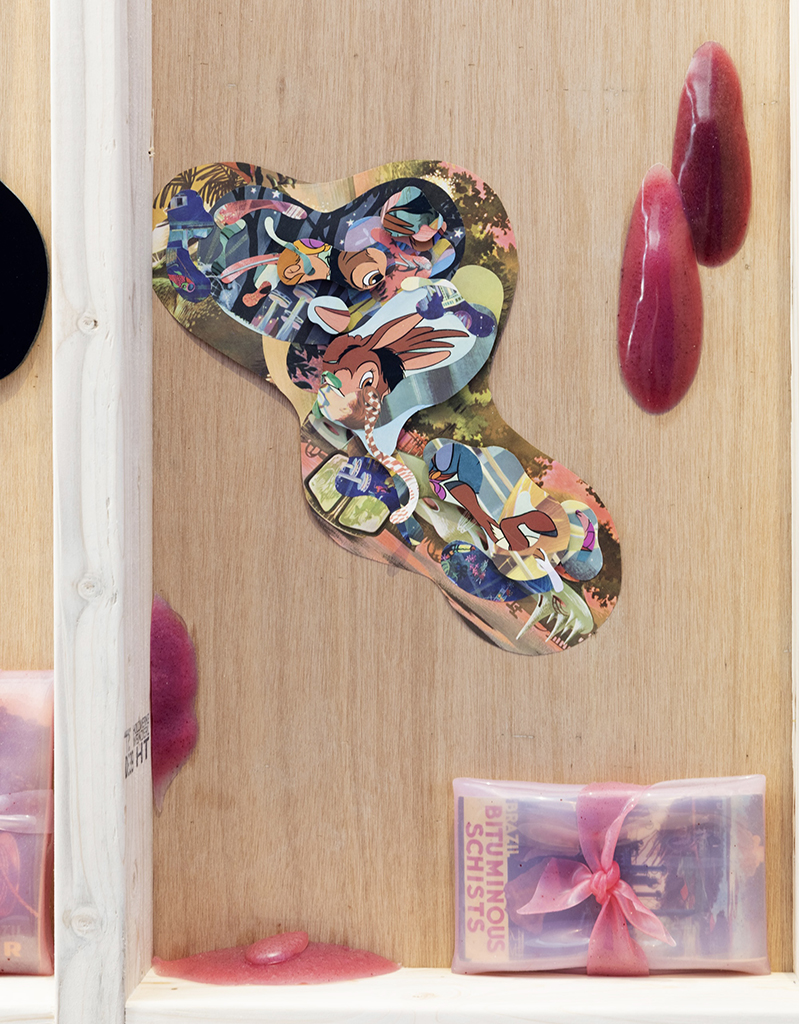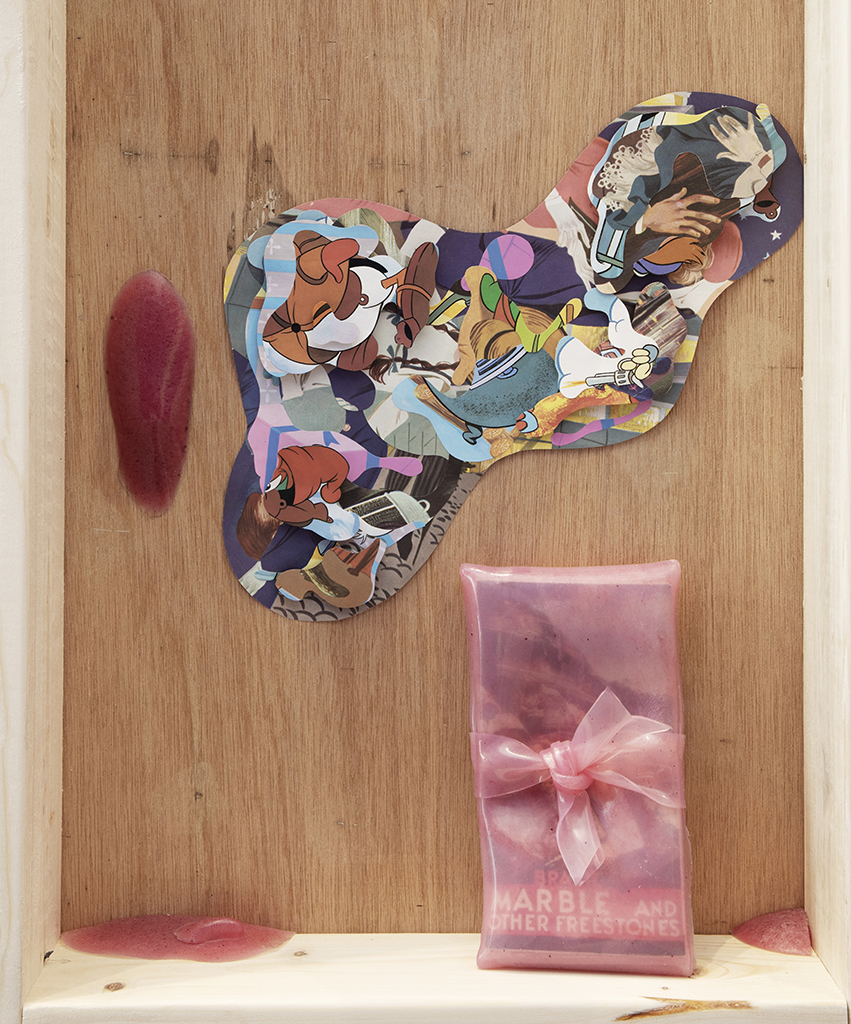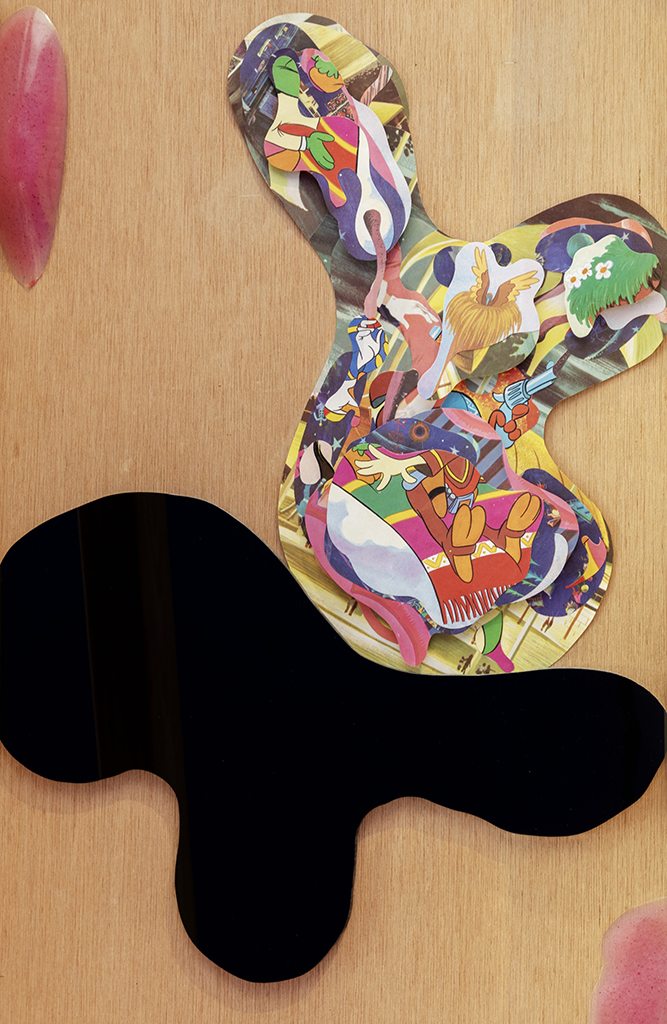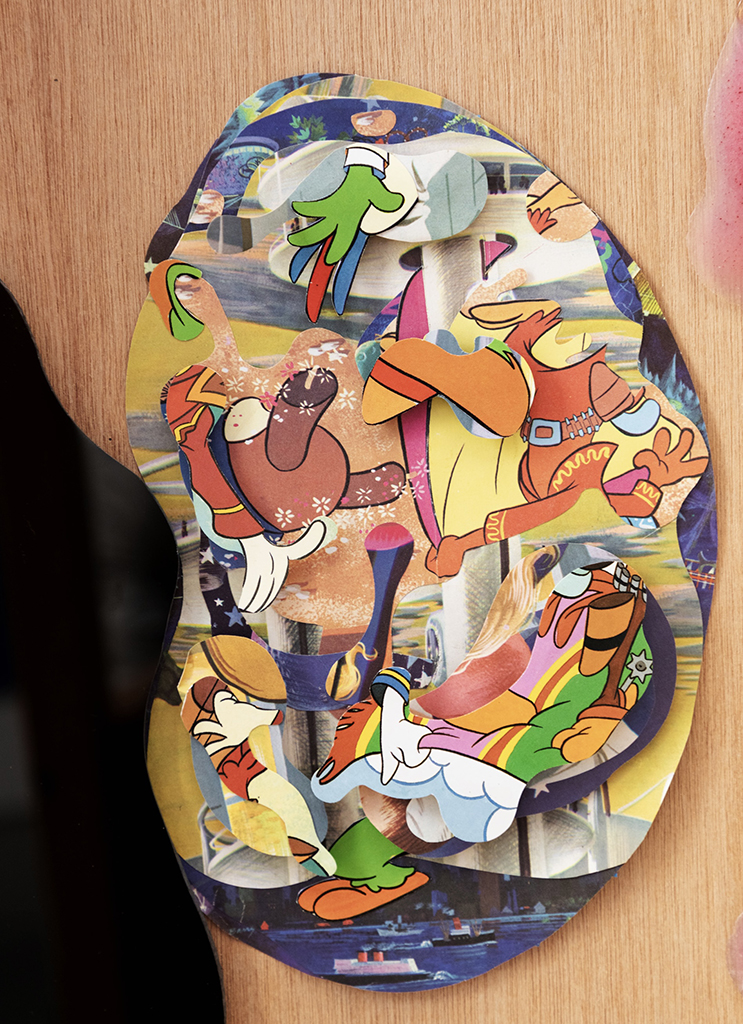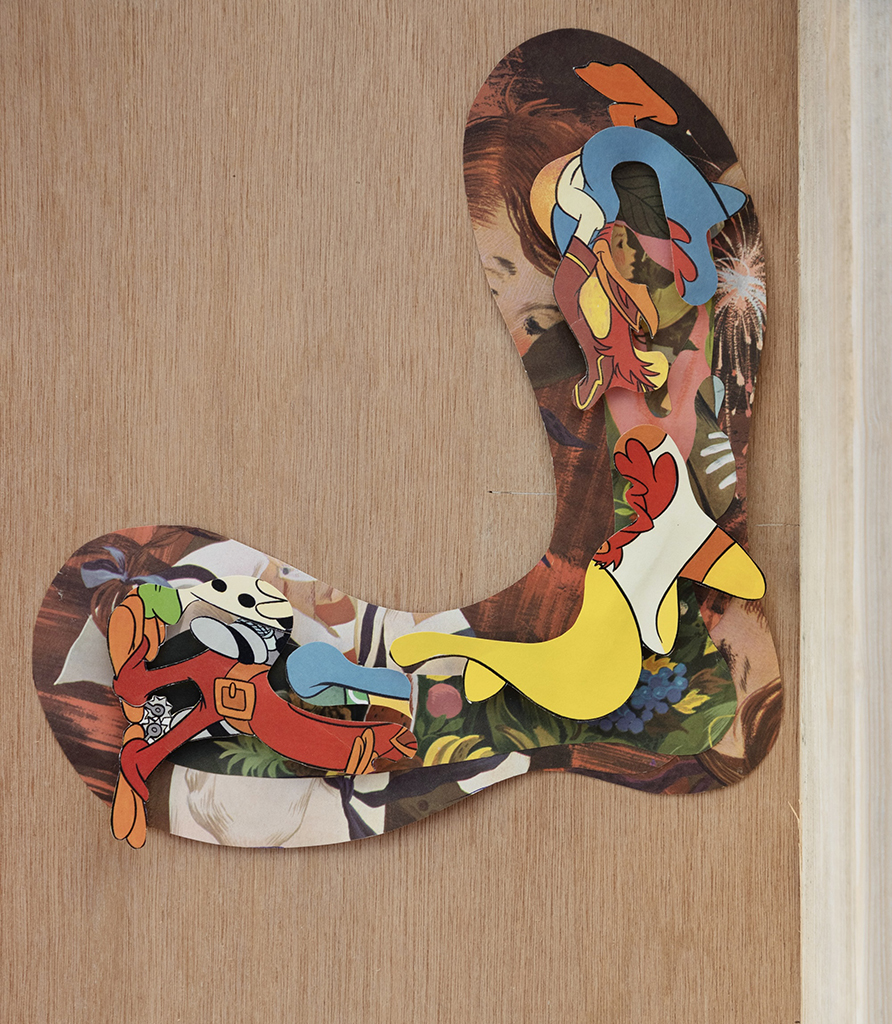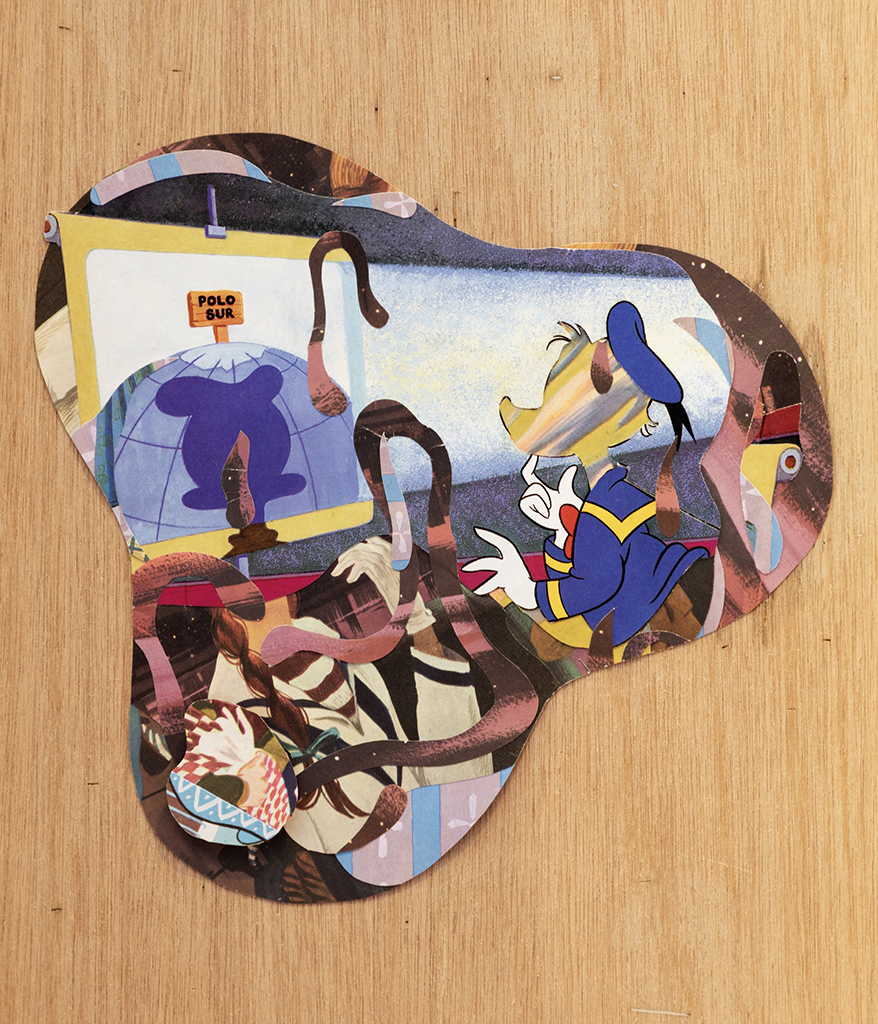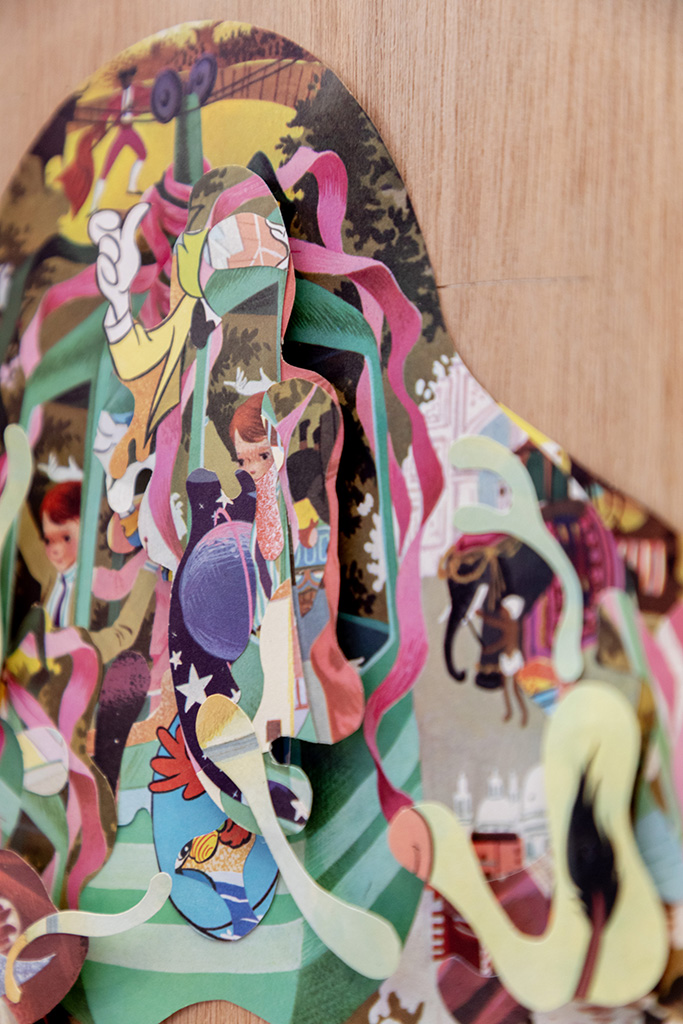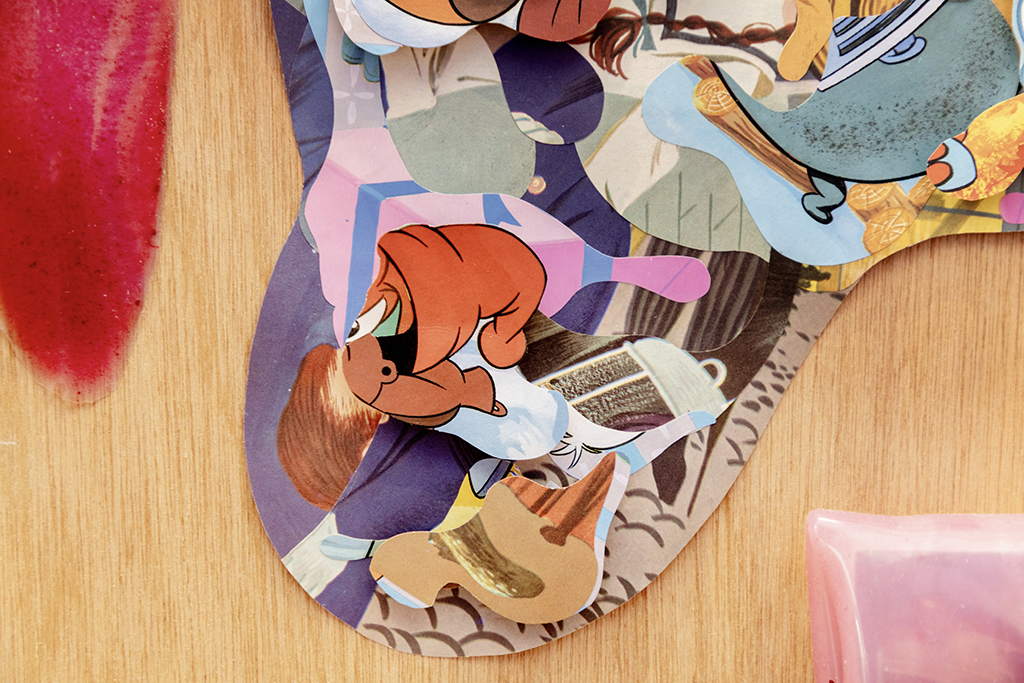Exhibitions / Installation
Buenos Vecinos, 2024
Solo Exhibition curated by Lindsey Berfond
Queens Museum, NYC
May 19, 2024 – January 19, 2025
Vinyl, paint, acrylic, leather and stone hunting bolas (boleadoras), plywood and drywall stage flat, painted mural, acrylic, paper collage, silicone, cochineal pigment, print 1939 and 1964-65 NY World’s Fair ephemera, single-channel looping video clip, and naturally dyed wool textile handwoven in the workshop of Casa González by Silvia Pérez Ruiz, Teotitlán del Valle, Oaxaca, Mexico with audio track, Pla+, resin, lacquer, cochineal pigment, Original production cel featuring animation frame from Los Tres Caballeros, 1944 (Ink and paint on celluloid acetate with color reproduction background), Children’s book illustrations and acrylic, Mold-A-Rama Donald Duck figurine
Site specific installation / Variable Dimensions
— view Zine —
— museum’s website —
In Buenos Vecinos, which translates to “good neighbors,” Catalina Schliebener Muñoz confronts the impact of two Walt Disney animated films: Saludos Amigos (1942) and Los Tres Caballeros (1944). Both films emerged from Disney’s state-sponsored research trips to South and Central American nations as part of The Good Neighbor Policy, which sought to discourage Nazi influence and improve the United States’ public image in Latin America following its numerous military invasions throughout the early 20th century. Disney and his team of artists toured Argentina, Brazil, Bolivia, Chile, Peru, and Mexico to generate visual motifs and storylines for recognizable characters like Donald Duck and Goofy, as well to create new characters, songs, and dances based on local customs and archetypes.
Schliebener Muñoz examines how these films functioned as a form of soft power, enlisting children’s media towards the economic and geopolitical interests of the United States. Through installation, collage, sculpture, and murals, the artist subverts reductive and exoticized representations of Latin American cultures in the films to center its secondary characters and rebellious underdogs. Schliebener Muñoz also contends with Disney’s depictions of gender, sexuality, race, and Indigeneity by appropriating and fragmenting the films’ imagery to create critical narratives of resistance. Acknowledging the capacity of stories to shape value systems, the exhibition employs mirroring, queer coding, ambiguity, and humor to challenge the imposed boundaries between the real and fictional, natural and synthetic, spectacular and grotesque.
As World War II gave way to the Cold War, the United States abandoned Pan-American unity to support coups and dictatorships in many of the countries depicted in Disney’s films. Schliebener Muñoz incorporates archival materials that address the aftermath of The Good Neighbor Policy, U.S. interventionism, and imperialist ideology through the history of the Queens Museum’s site. This building hosted the former United Nations, where decisions ranged from the 1947 partition of Palestine to the creation of UNICEF, and is also located on the grounds of the 1964/65 New York World’s Fair where Disney premiered the “It’s A Small World” attraction. For Schliebener Muñoz, this context becomes integral to understanding the legacy of Disney’s films alongside hostile foreign policies, and how the imagination of children became a vehicle for the projection of American innocence and exceptionalism on the global stage.
